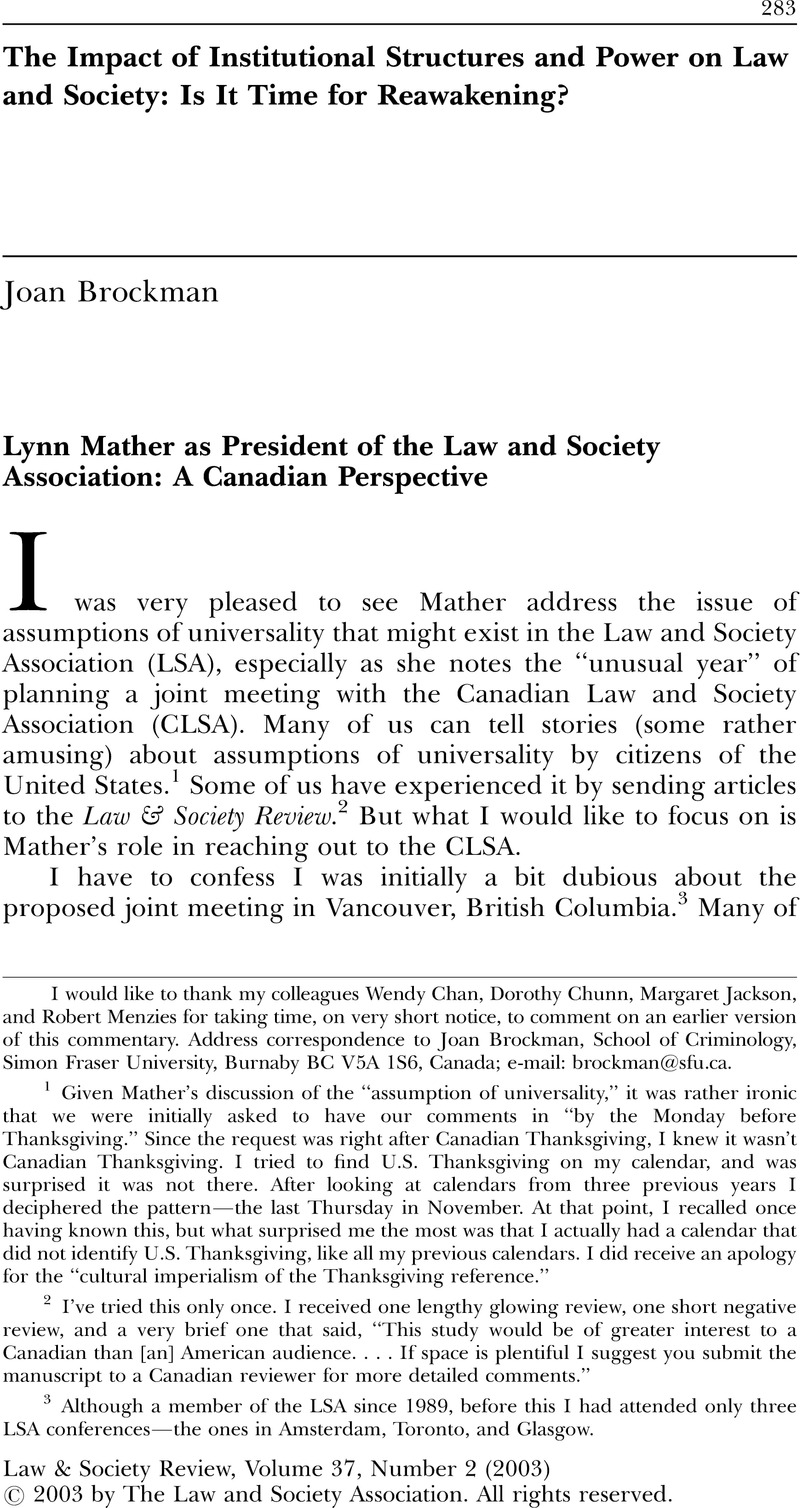Crossref Citations
This article has been cited by the following publications. This list is generated based on data provided by Crossref.
Mather, Lynn
2003.
Reflections on the Reach of Law (and Society) Post 9/11: An American Superhero?.
Law & Society Review,
Vol. 37,
Issue. 2,
p.
263.
Abel, Richard L.
2010.
Law and Society: Project and Practice.
Annual Review of Law and Social Science,
Vol. 6,
Issue. 1,
p.
1.
Verzelloni, Luca
2019.
Seguendo come un'ombra il diritto. Riflessioni sull'impiego dello shadowing nella sociologia del diritto.
SOCIOLOGIA DEL DIRITTO,
p.
23.



